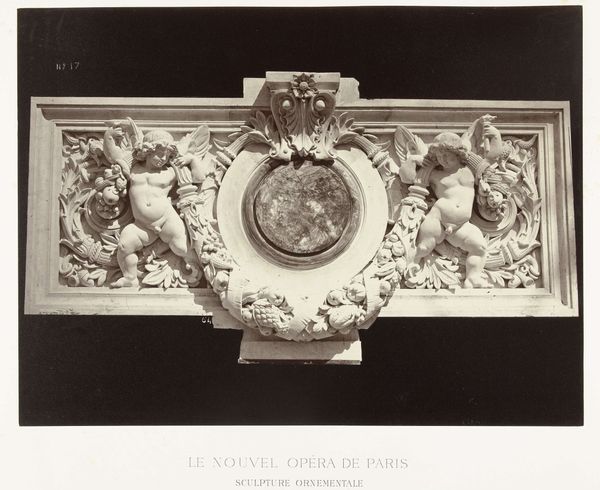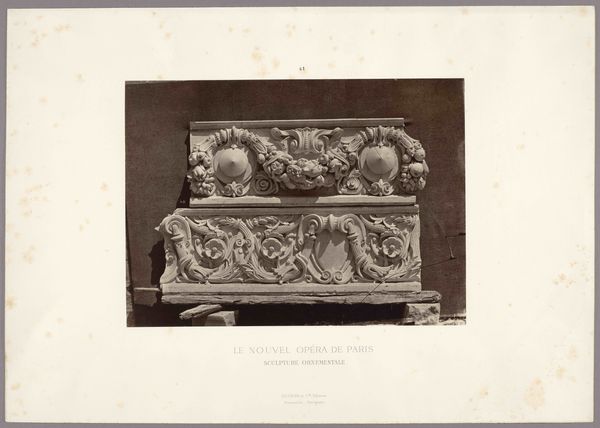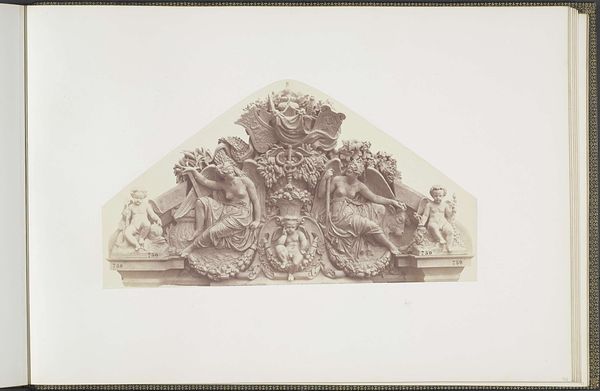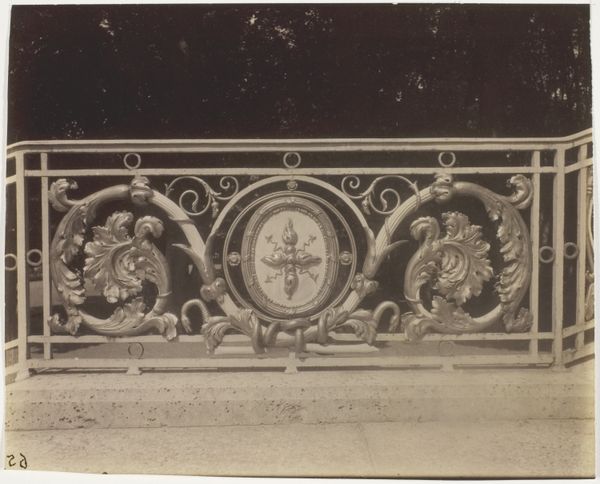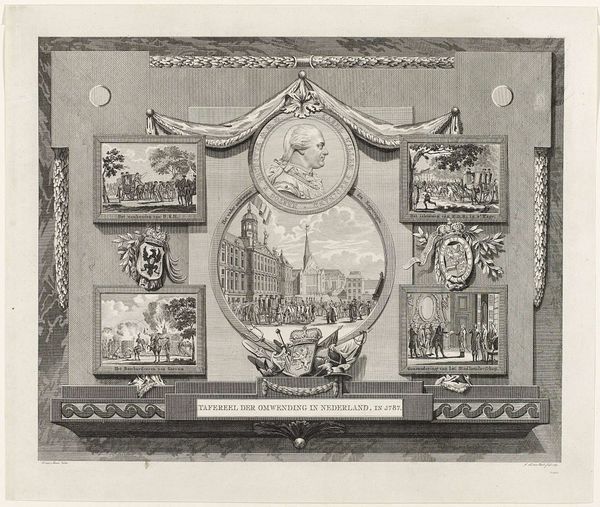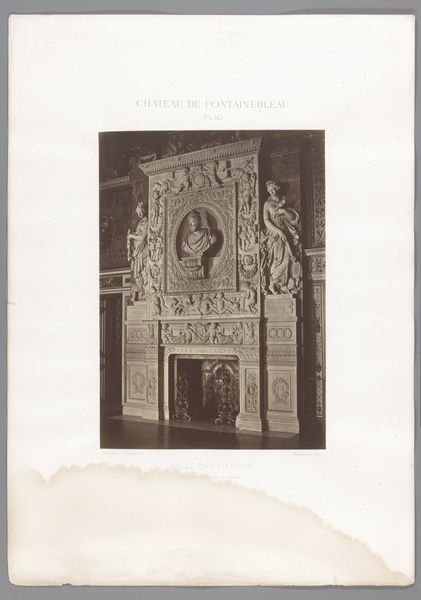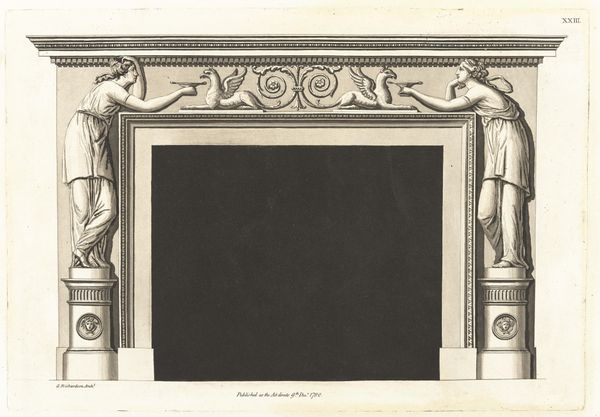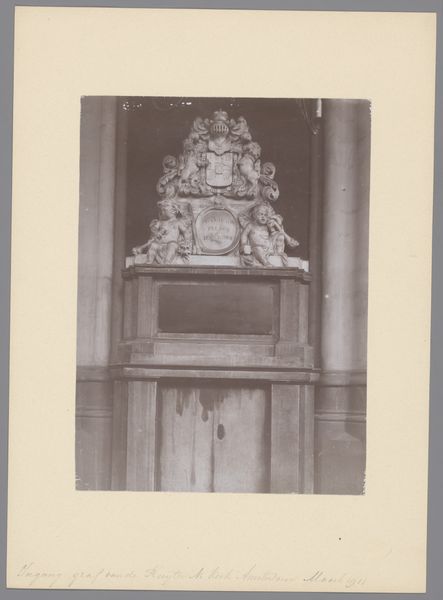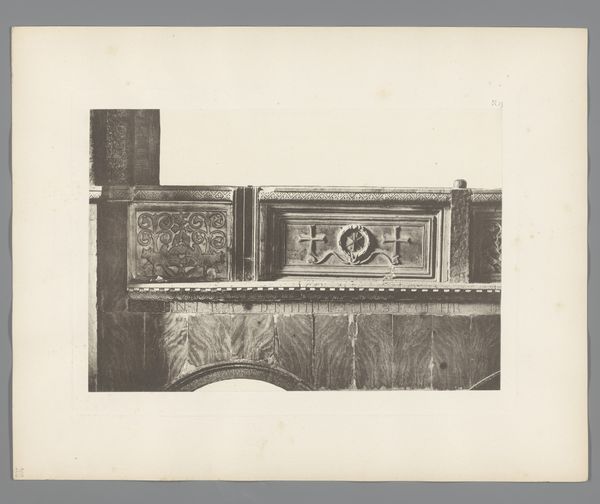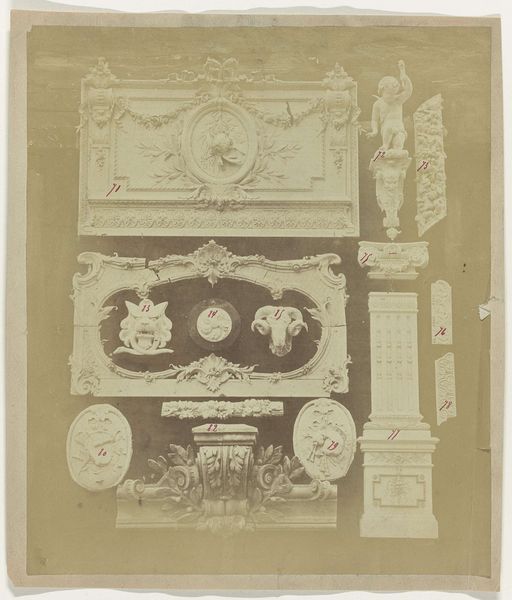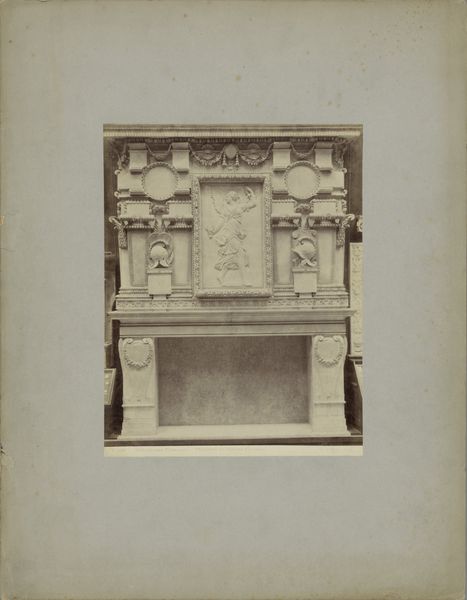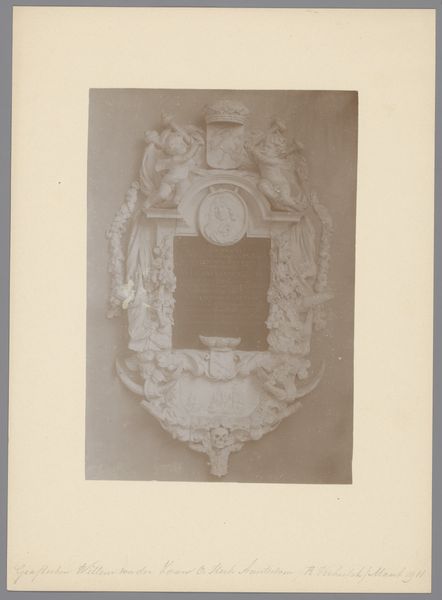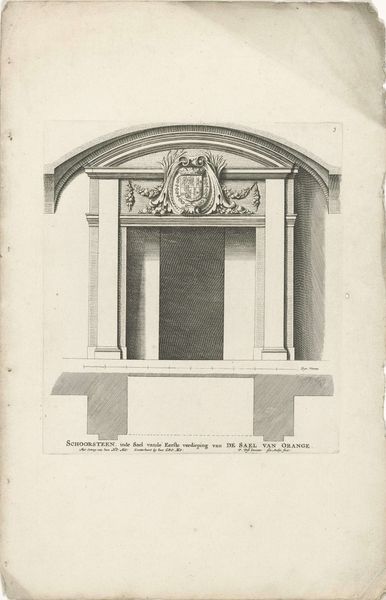
Reliëf boven de deurpost waar mannelijke engelen naast een medaillon en boven ornamenten zijn geplaatst. c. 1878 - 1881
0:00
0:00
Dimensions: height 375 mm, width 279 mm, height 620 mm, width 438 mm
Copyright: Rijks Museum: Open Domain
Editor: Here we have a photograph by Louis-Emile Durandelle, taken between 1878 and 1881, of a relief above a doorpost. It depicts male angels flanking a medallion, and it's quite ornate. I find the theatrical masks a little unsettling; what strikes you most about this piece? Curator: I'm immediately drawn to the historical context of this relief within the broader socio-political landscape of late 19th-century France. The angels and classical motifs are a clear nod to Neoclassicism, but let’s think about why this return to idealized forms was so popular. It often served to legitimize power, didn't it? Editor: So, you're saying the choice of Neoclassicism is a deliberate statement? Curator: Precisely. The opulent design can also be read through a lens of gender. The idealized male form and the surrounding embellishments serve as both spectacle and assertion of a very specific type of masculine power during a time of social upheaval, but let's note it's a somewhat passive presentation of masculinity, even reclining... What does that tell us? Editor: That's a great point. I hadn’t thought about the possible link between artistic style and gender politics. What about the purpose of placing such figures over doorways in prominent places like the opera house? Curator: Architecture acts as a stage, where sculptures enforce the cultural values, the history the building must tell, or wants to project. This piece would have acted as a constant reinforcement of societal expectations, literally framing people as they move in and out of spaces. Editor: Wow, I will not look at those doorways in the same way ever again! Thanks, I have learned a lot. Curator: It was an honor to walk you through it; history speaks when you listen.
Comments
No comments
Be the first to comment and join the conversation on the ultimate creative platform.
